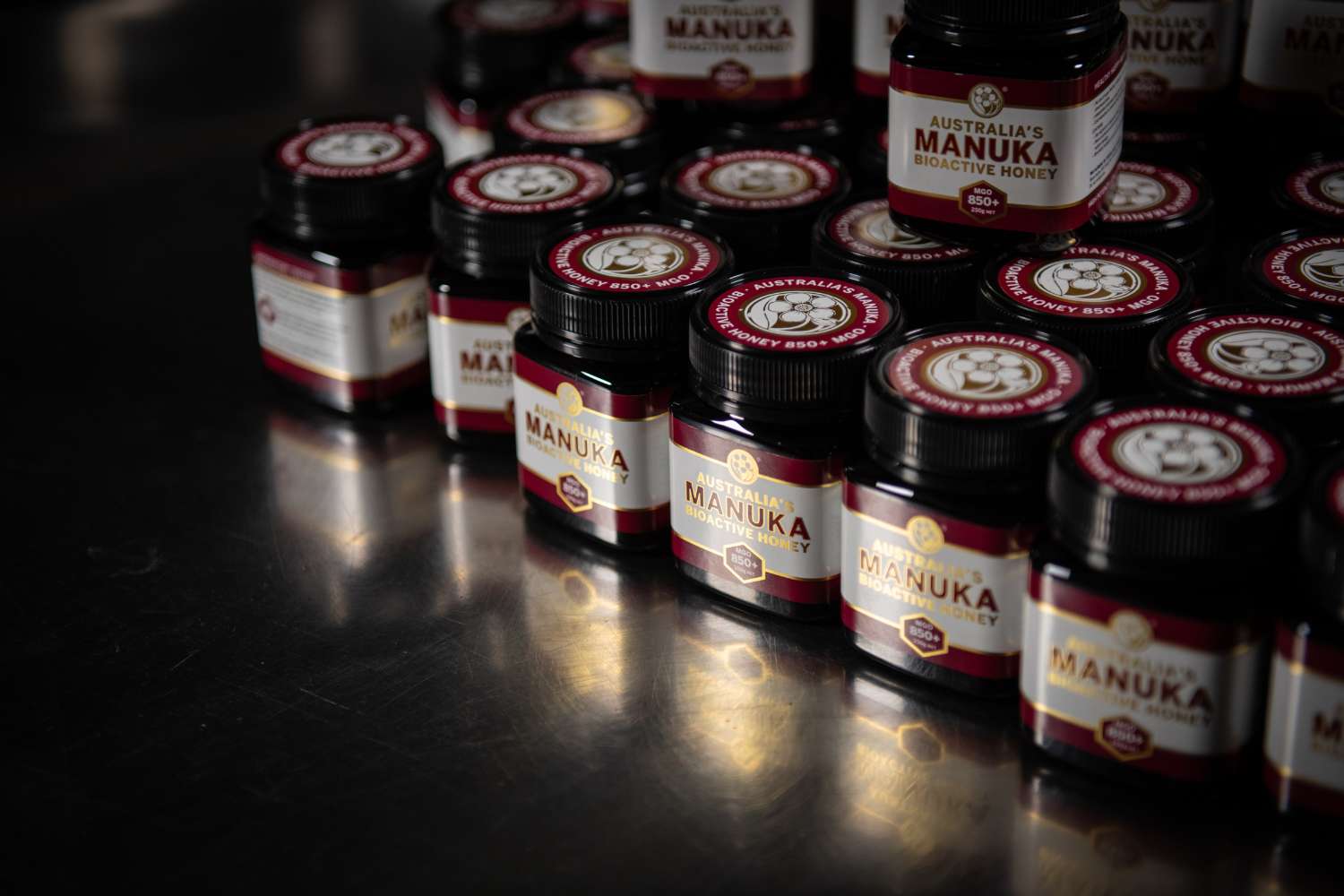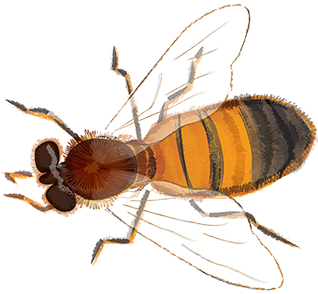How long has Manuka honey been around for?
Manuka honey or Leptospermum honey originating in Australia has been around for centuries. First Nations people from Australia have probably been using Leptospermum honey produced by native stingless bees for over 40,000 years. This highly medicinal honey is used for various ailments such as sore throats and wound healing. In Australia, the indigenous name for both honey and the honey bees of native stingless bees is called “sugar bag”. “Sugar bag” was important for food, trade, gifting and well-being.
Western medicine discovered beneficial properties of Manuka honey more recently in the late 1980s from honey derived from the introduced European bees. Professor Peter Molan from Waikato University researched and documented the significant benefits of Manuka honey. Since then, there has been over 40 years of medicinal research into the Leptospermum group of plants with 84 varieties found in Australia. New Zealand has one variety, Leptospermum scoparium, which is believed to be endemic to Australia and introduced later to New Zealand.

Reasons why Manuka honey is expensive
Manuka honey is rarer and more expensive than other honeys because it only comes from Australia and New Zealand. It contains high levels of methylglyoxal (MGO), a compound with powerful antibacterial and antimicrobial effects not found in such high amounts in other plants.
Manuka honey’s MGO levels vary, and these levels are used to rate its quality. Different ratings are used for specific purposes, such as treating wounds, helping with digestion, and relieving sore throats. As scientists study this special honey more, they discover additional health benefits. In general, the higher the MGO content, the rarer and more expensive the honey is.
Producing Manuka honey is more expensive than regular honey because it must be tested regularly to make sure it has the right health properties, and it needs time to mature, much like fine wine. Its thick consistency also makes it harder to extract and process. On top of that, getting to the Manuka plant sites can be challenging, the plants have a very short flowering period, and weather conditions or other natural factors can sometimes result in poor harvests.

Completely different to normal honey
The compound Methylglyoxal (MGO) is what makes Manuka honey unique. MGO gives the honey antibacterial and antimicrobial potency. A second compound called Dihydroxyacetone (DHA) found in the nectar of Leptospermum plants and in Manuka honey encourages the MGO to get stronger as it ages.
Once mature, Manuka honey has varying levels of MGO activity. The higher the MGO rating the stronger the antibacterial grade. In our experience, the higher the MGO rating of the honey the rarer it is and therefore the more expensive the Manuka honey is. We are now harvesting honey up to 2000 MGO in limited quantities.
These days we are seeing more “superbugs” which are bacteria that have developed a resistance to modern antibiotics and are currently causing serious infection. The extraordinary thing about the antibacterial activity of Manuka honey is that bacteria cannot develop resistance to Manuka honey containing MGO (Blair et al. 2009).
Manuka honey is a rare commodity
Manuka honey is more expensive than most other honey because it is rare and only produced in Australia and New Zealand. The flowers the bees collect the nectar from, to make Manuka honey are from the Leptospermum family, which is native to Australia.
Farming Manuka honey costs more to produce than other honeys. The Australian Beekeeper colloquial term for Manuka honey is Jellybush. This name is derived from its thick consistency which makes it much more difficult to harvest than more liquid honeys such as Eucalyptus.
Moving bees onto sites with specific Leptospermum plants to collect Manuka honey can be difficult to access as they are often in remote parts of pristine forests. The turnaround time for moving the bees or collecting the honey is time critical as each flowering is only a for 4-6 weeks of the year.
Manuka Tree has a short flowering window each year
Manuka or Leptospermum plants flower for only 4-6 weeks per year. This is a relatively short flowering period for bees to collect a supply of nectar. In Australia, there are many different varieties of active Leptospermum plants which produce MGO honey.
Beekeepers who choose to collect Manuka Honey must be very skilled and have a lot of knowledge of Manuka plants to be successful in collecting this honey from the bees as they only have short windows of opportunity. The bees may also need to be moved multiple times for different flowerings. We move our bees on and off different Manuka sites as the flowering changes.
Manuka honey undergoes authentication and rating reviews
Our Manuka honey is regularly tested in approved independent laboratories to determine its strength. The honey is tested for Methylglyoxal MGO, Dihydroxyacetone (DHA) and Leptosperin. These tests are additional costs of producing Manuka honey and each honey could be tested up to 5 times before sale. To ensure quality Manuka honey we recommend you follow the MGO grading system that carries the Australian “Authentic Certified” symbol of the Australian Manuka Honey Association (AMHA).

Manuka honey varies in MGO / UMF ratings
The table below shows the comparable strengths of MGO verse UMF.

After testing our honey, we grade our honey at different MGO ratings ranging from 30+ MGO to 2000+ MGO.
Ideally, Manuka honey should not be heated too high as above 40C it can start to lose its beneficial properties. When eating Manuka honey use it in smoothies, dips, drizzled over food or stir into warm drinks.
Everyday Health Manuka Honey
MGO 30+ can be used as an Everyday Healthy Treat. This multifloral Manuka honey is mild strength. It is perfect morning and night as a natural healthy treat or tasty alternative to sugar. Can be eaten straight off the spoon or in recipes.
MGO 100+ is a Daily Maintenance Dose. Can be used daily for good health and well-being. This honey can also be used directly on skin as a natural beauty treatment.
Medicinal Antibacterial Manuka Honey
MGO 250+ is the minimal activity required for Wound and Oral care and is scientifically proven to have reliable antibacterial potency. Used in treatment of minor cuts, burns and skin conditions in both humans and animals.
MGO 550+ potency is ideal to maintain Digestive Health. It is powerful superfood and prebiotic with strong antibacterial strength. Excellent for use with gut problems and stomach ulcers.
MGO 850+ Manuka honey is good Wound and Oral Care for wounds that are slow to heal, as it has more potent antibacterial and cleansing properties and promotes faster skin healing. This honey is also great to treating common colds, sore throats and coughs.
MGO 1200+ is a Super Manuka and has all the previous medicinal benefits but if you require a more rapid and potent action choose this honey.
MGO 1500+ is a stronger MGO honey and has all the benefits of other Manuka honey but is more potent.
MGO1900+ Ultimate is our rare, exceptionally potent honey, with all the benefits of other Manuka honey but much, much stronger.
Higher rated honeys can be used instead of lower rated honeys however, lower rated honeys do not work in place of higher rated honeys.
If symptoms persist or you are unsure or have a medical condition speak to your medical professional before using Manuka honey.
Manuka honey is only found in certain parts of the world
Manuka honey is only produced in Australian and New Zealand from the Leptospermum flower nectar collected by the bees. Australian Manuka honey is delicious and usually more delicate in taste than New Zealand Manuka which generally is a more bitter tasting honey.
Due to the sheer size of Australia compared to New Zealand and the larger number of Leptospermum varieties Australia naturally produces some of the stronger MGO honeys. As the honey is only produced in two countries this makes it more expensive than other honeys that are produced globally.
Why some Manuka honey brands have different pricing
Brand reputation plays a role in pricing where customers are more likely to pay top dollar for a brand they are familiar with and trust.
Supply and demand of honey in the honey markets affect the price of honey. Manuka honey is priced differently to regular honey. However, it is still dependent on the supply and demand of Manuka honey in each country. Government import and export rules may affect the supply and demand and the price of honey.
The quality and quantity of Manuka honey harvested is also influenced by seasonal weather variations and fires. If there are floods, fires and drought conditions, bees and forests are affected and beekeepers may not be able to produce Manuka honey which can affect the supply and price of honey.
Try Australia’s Manuka Honey with us today
We are a farm to table Manuka honey producer, which means you are getting your honey straight from the beekeeper. We pride ourselves in producing and packing top quality, cold extracted Manuka honey harvested from the pristine forests surrounding Byron Bay in northern NSW, Australia. We are a family business with three generations working in the business. You can buy our honey online, at our local farmers market or in stores. Try some of our delicious and potent Manuka honey today!











